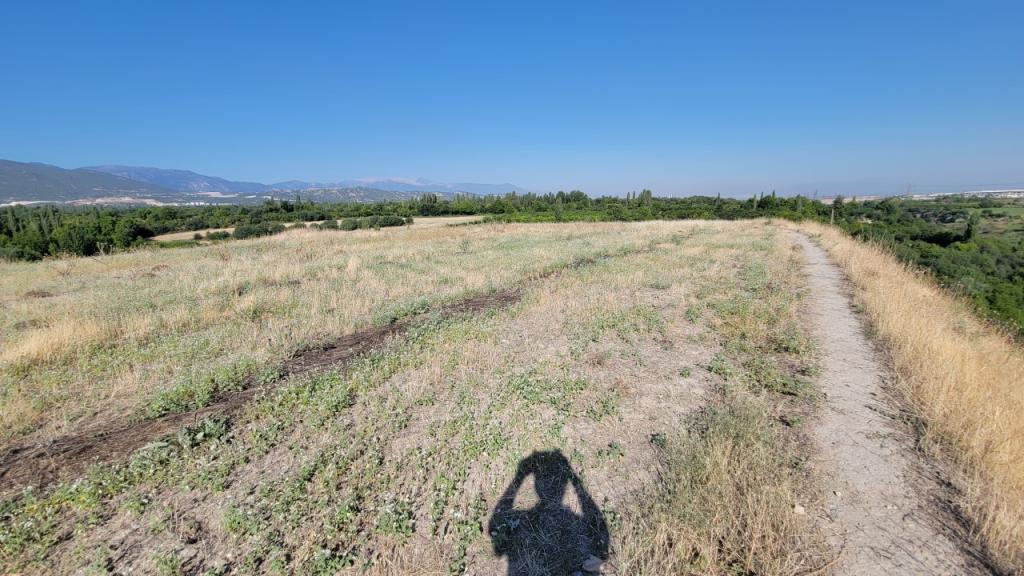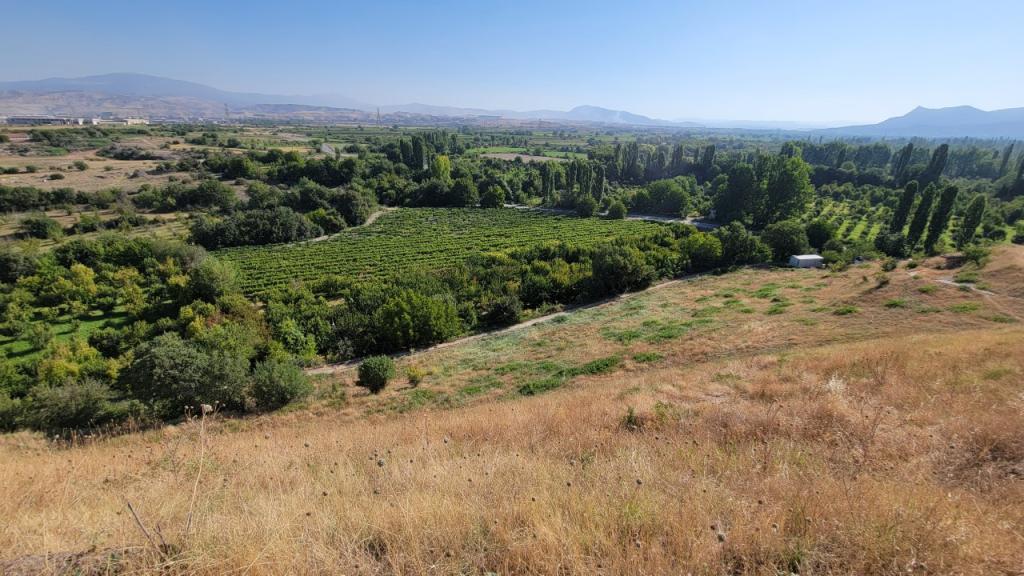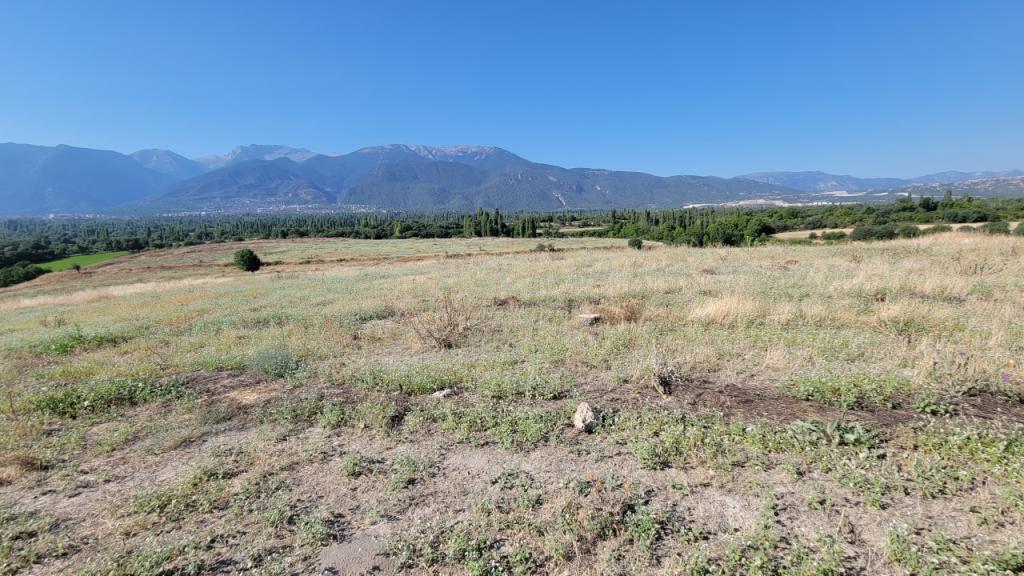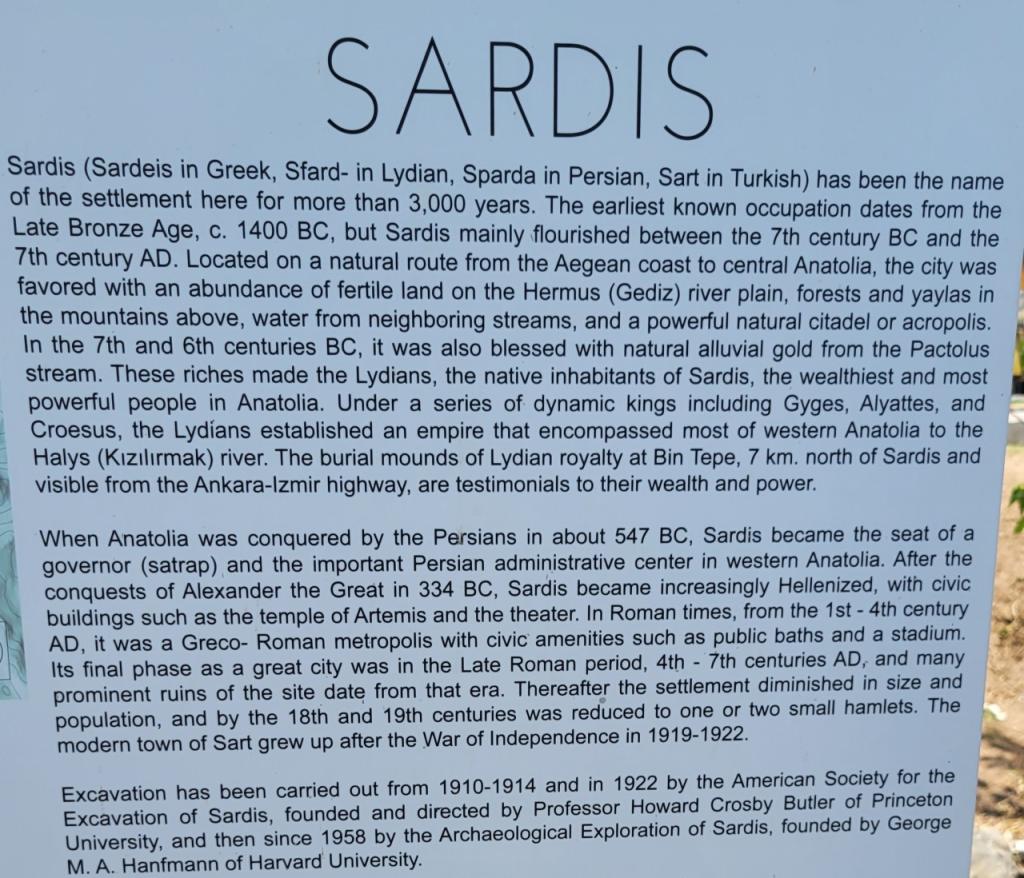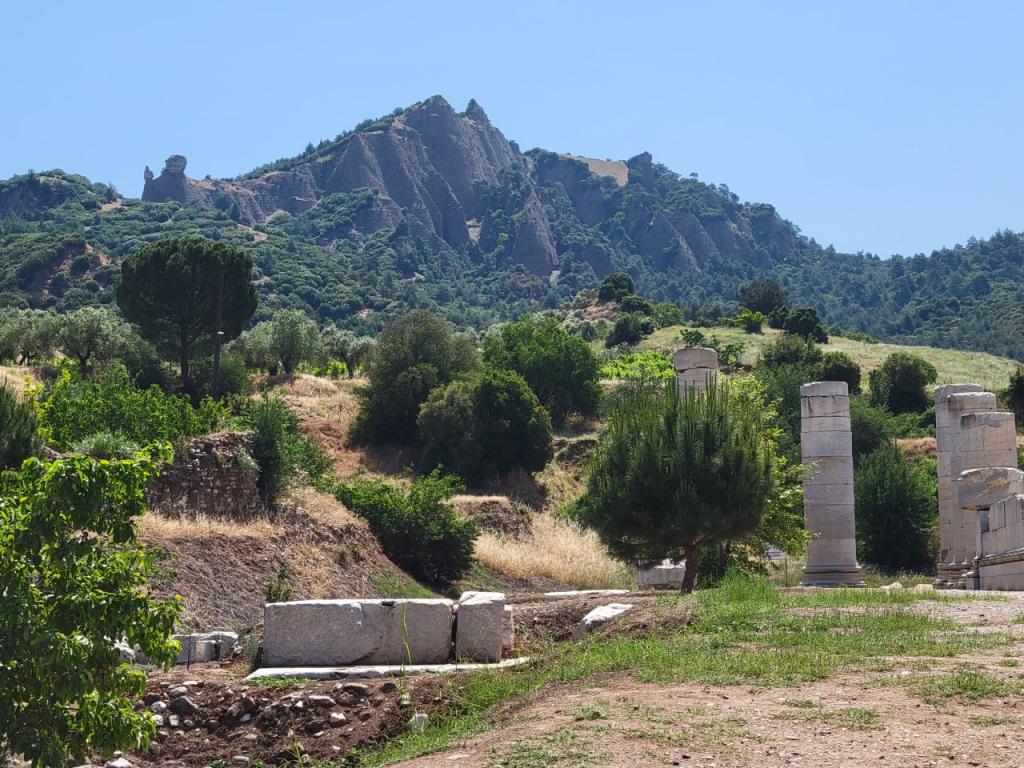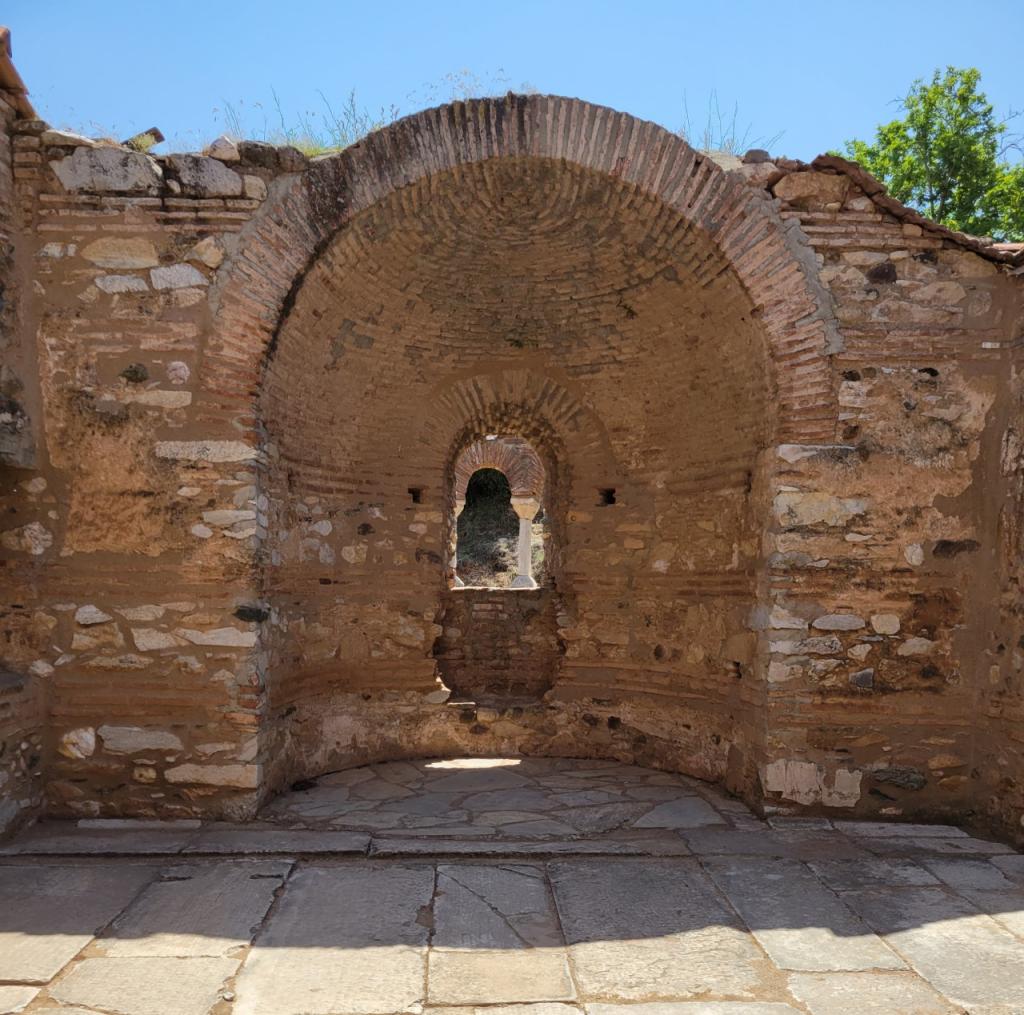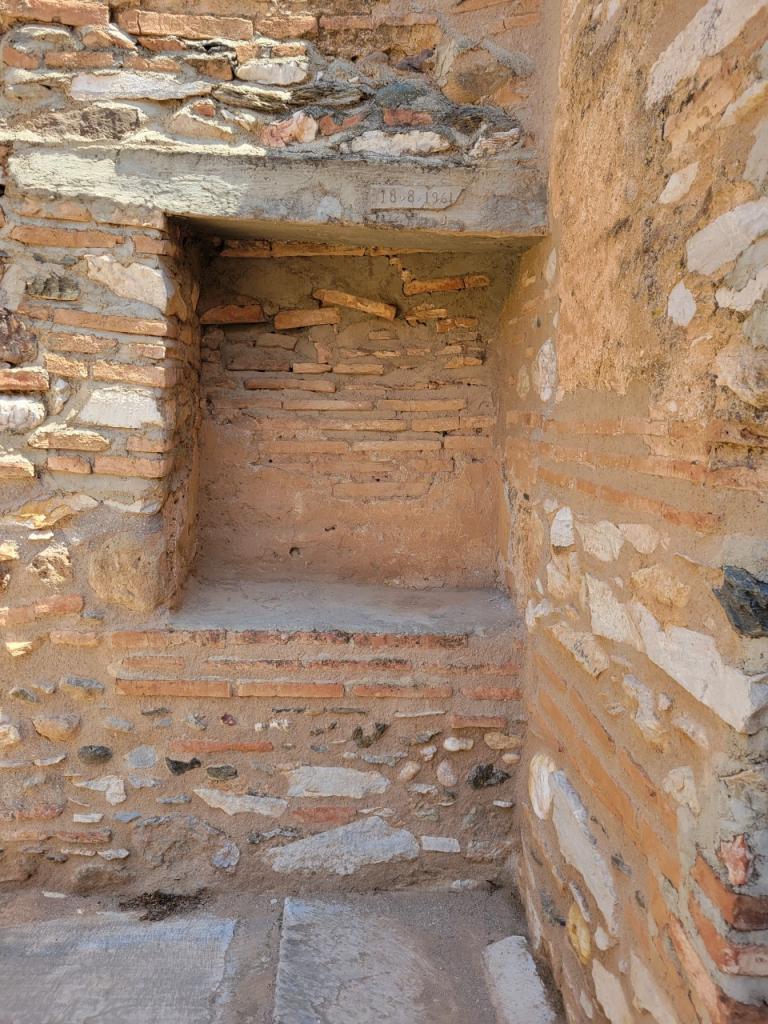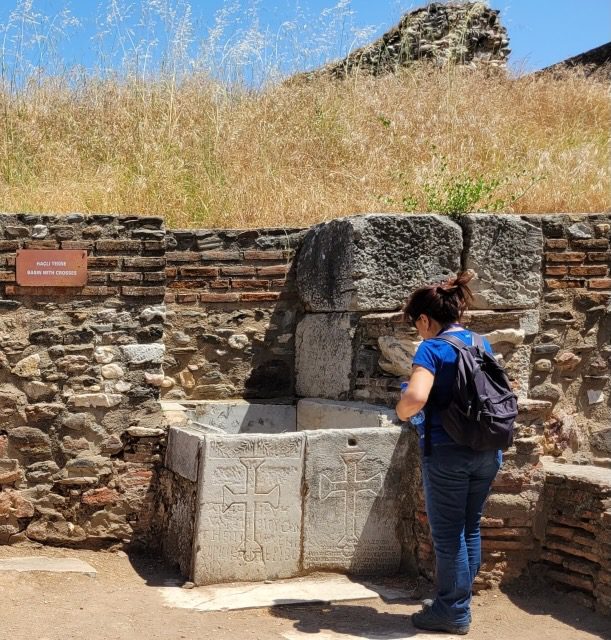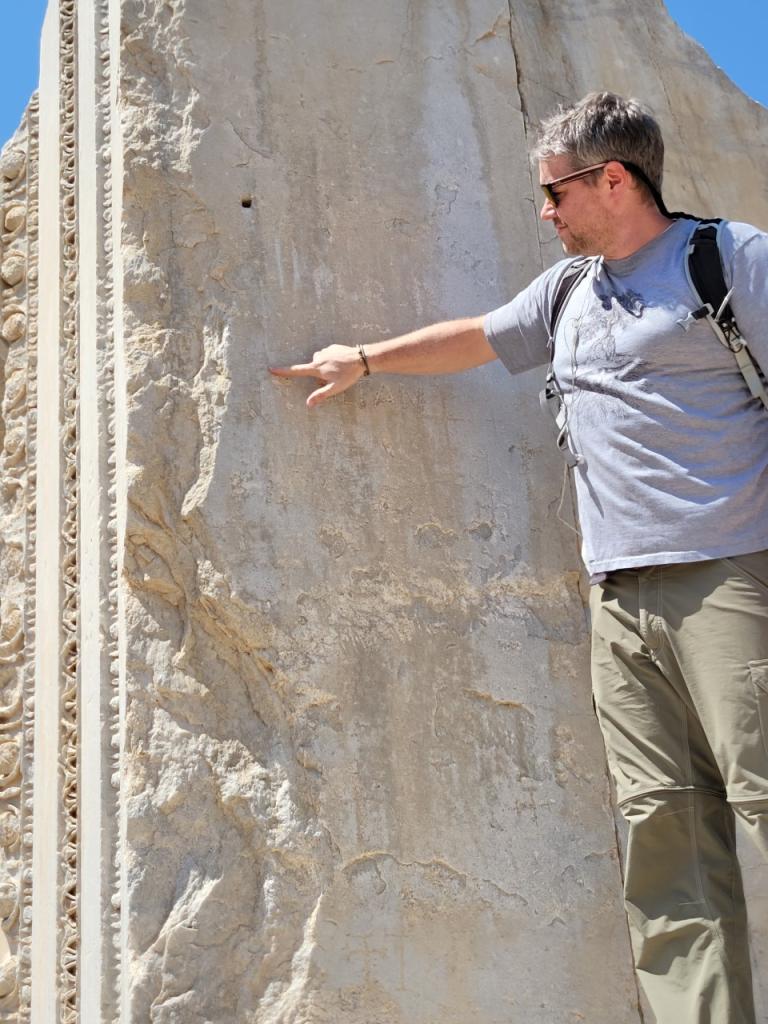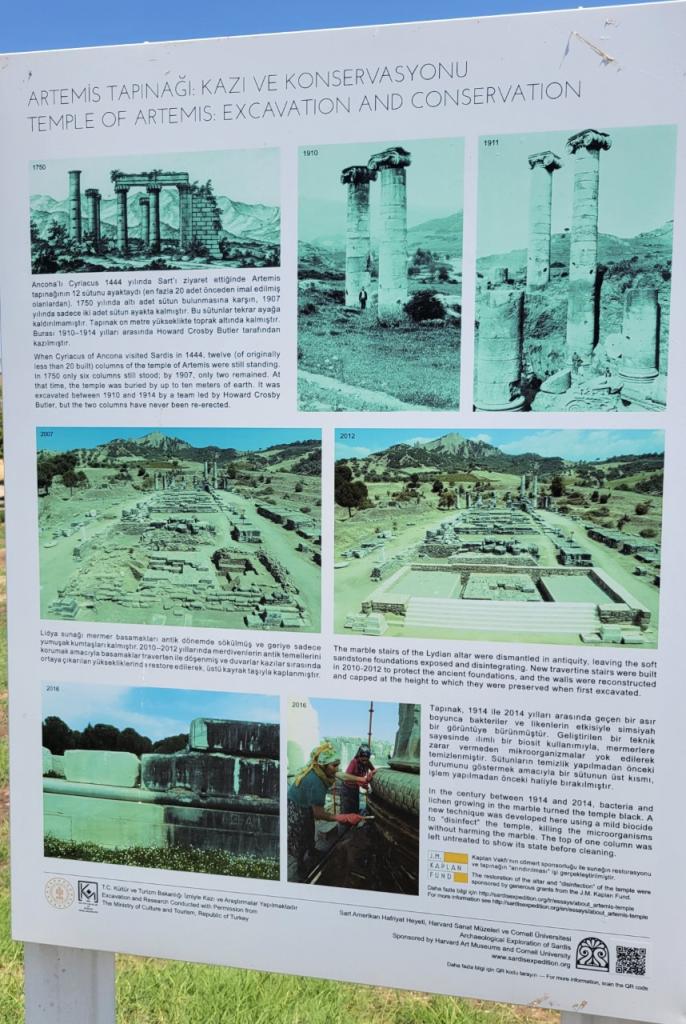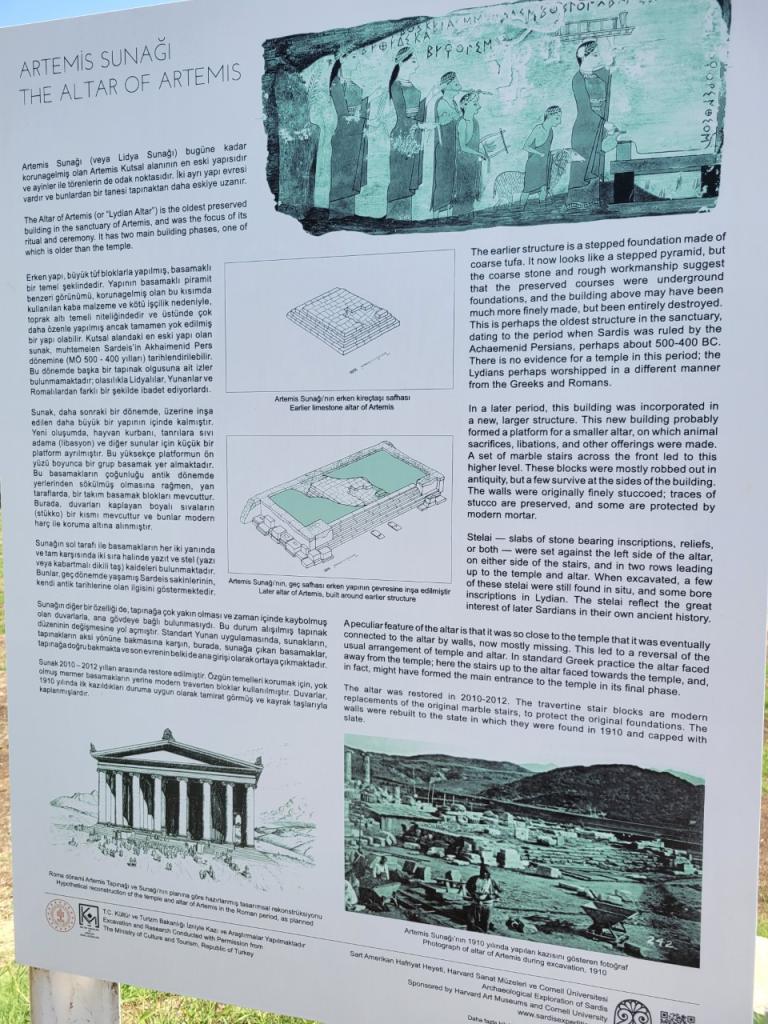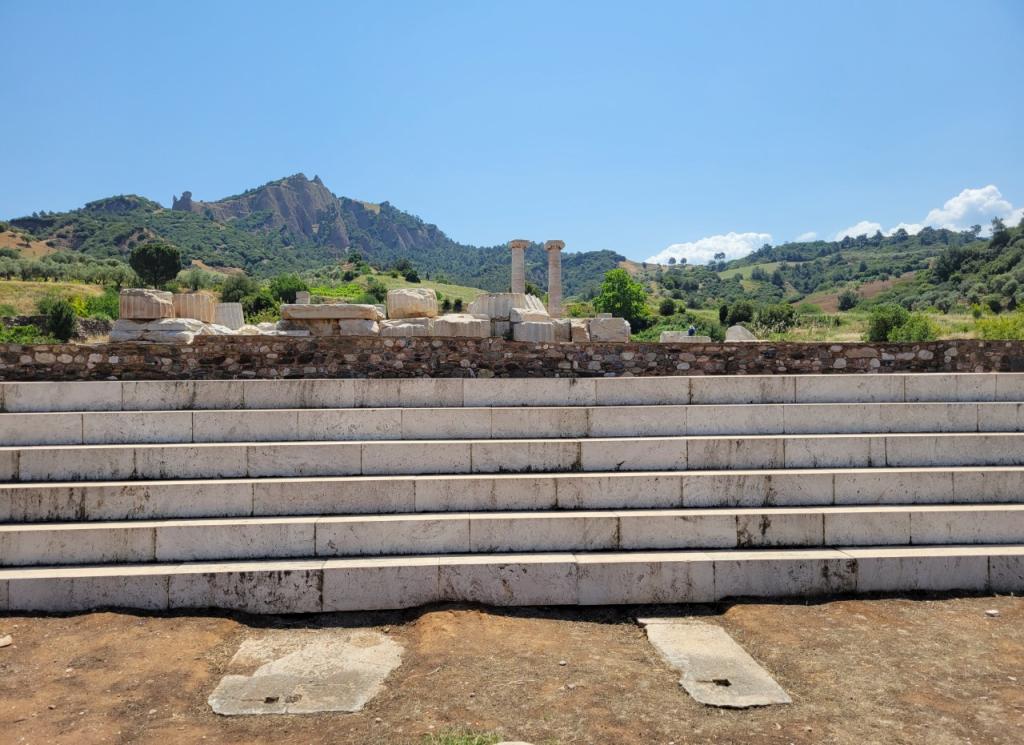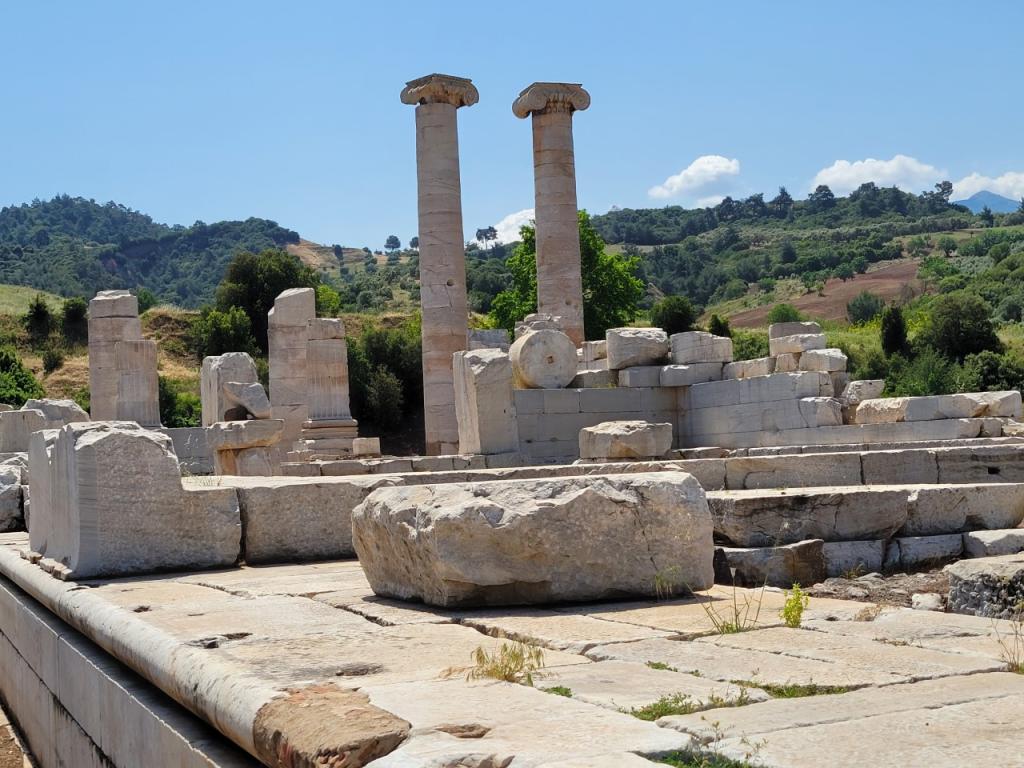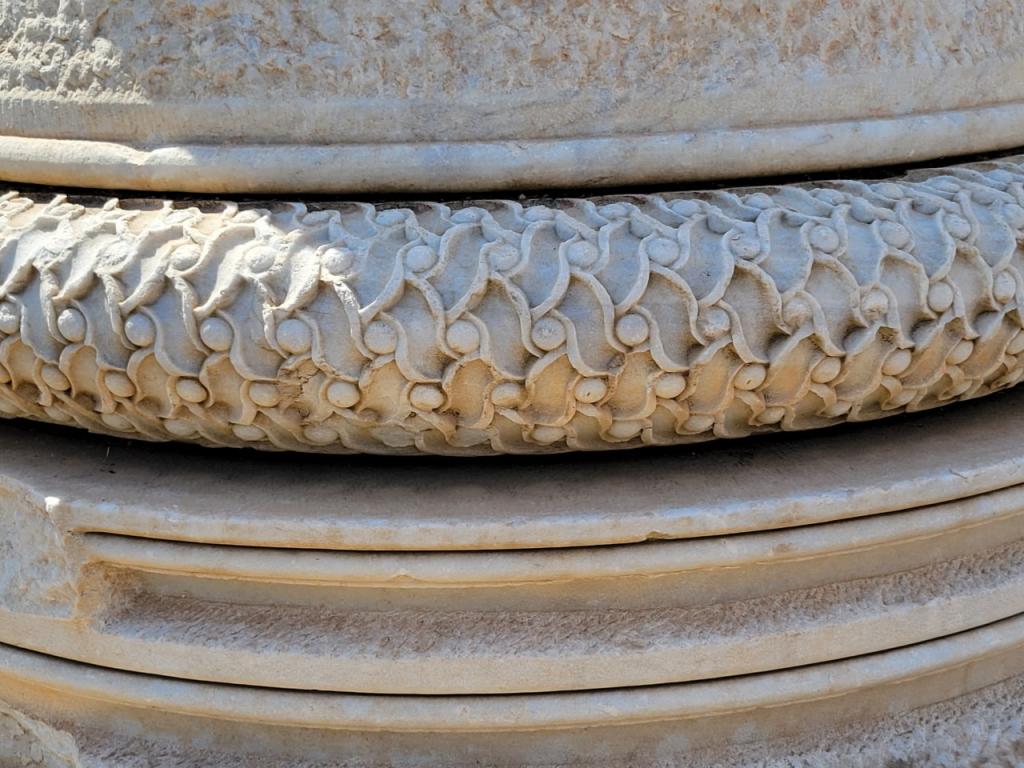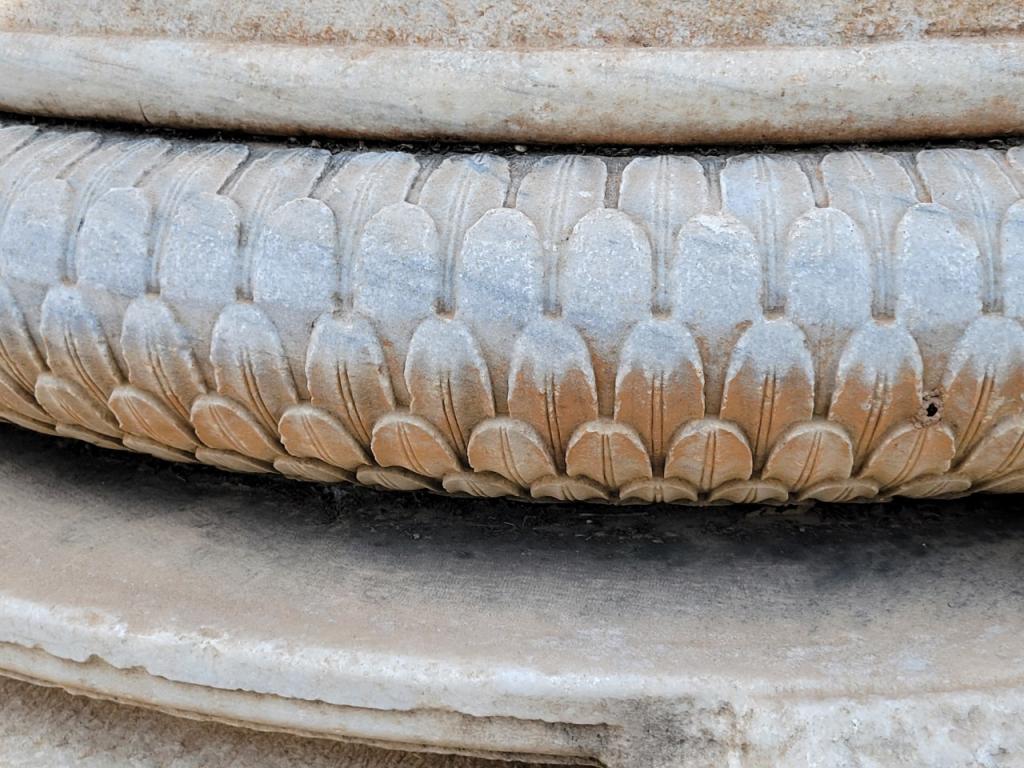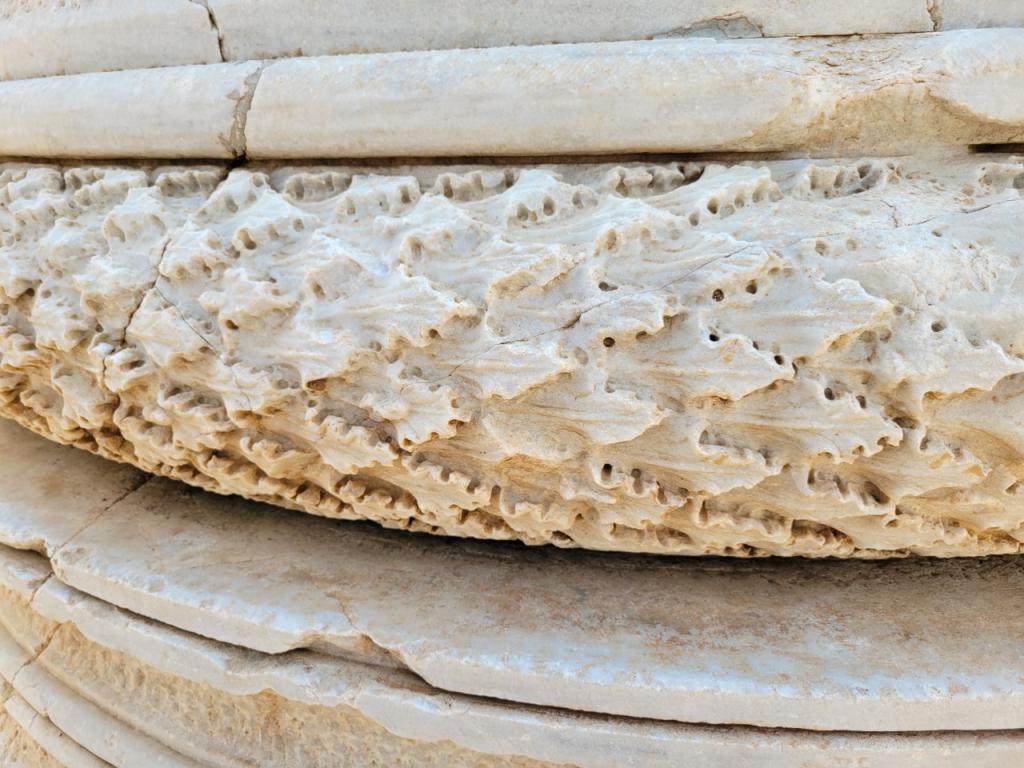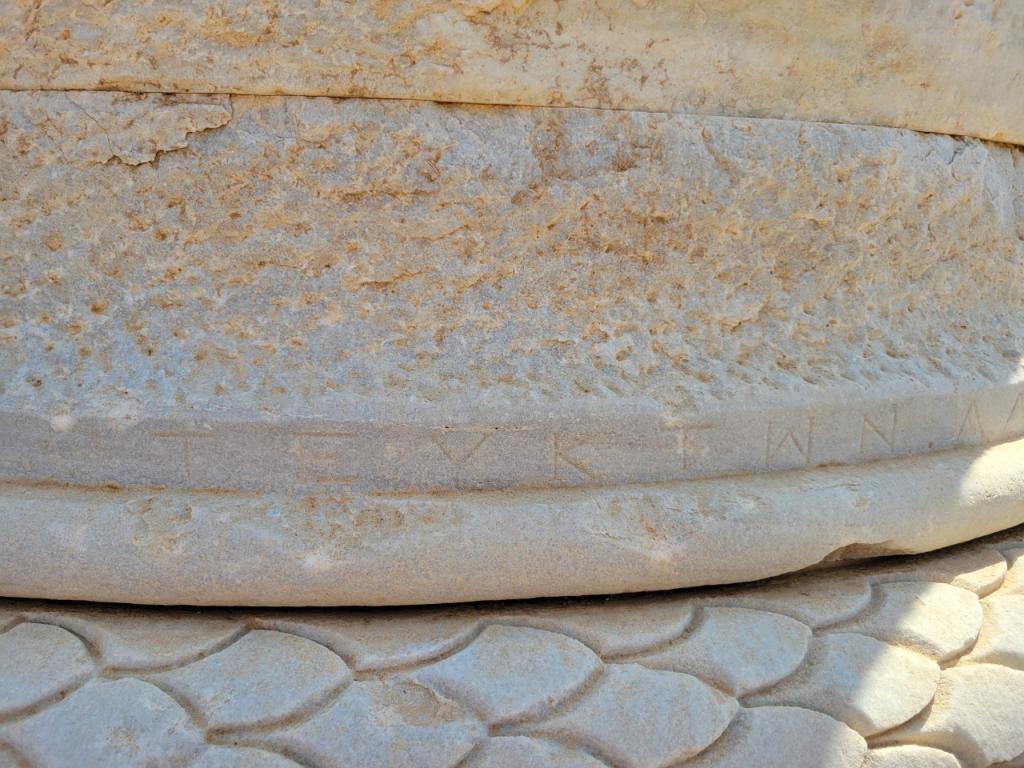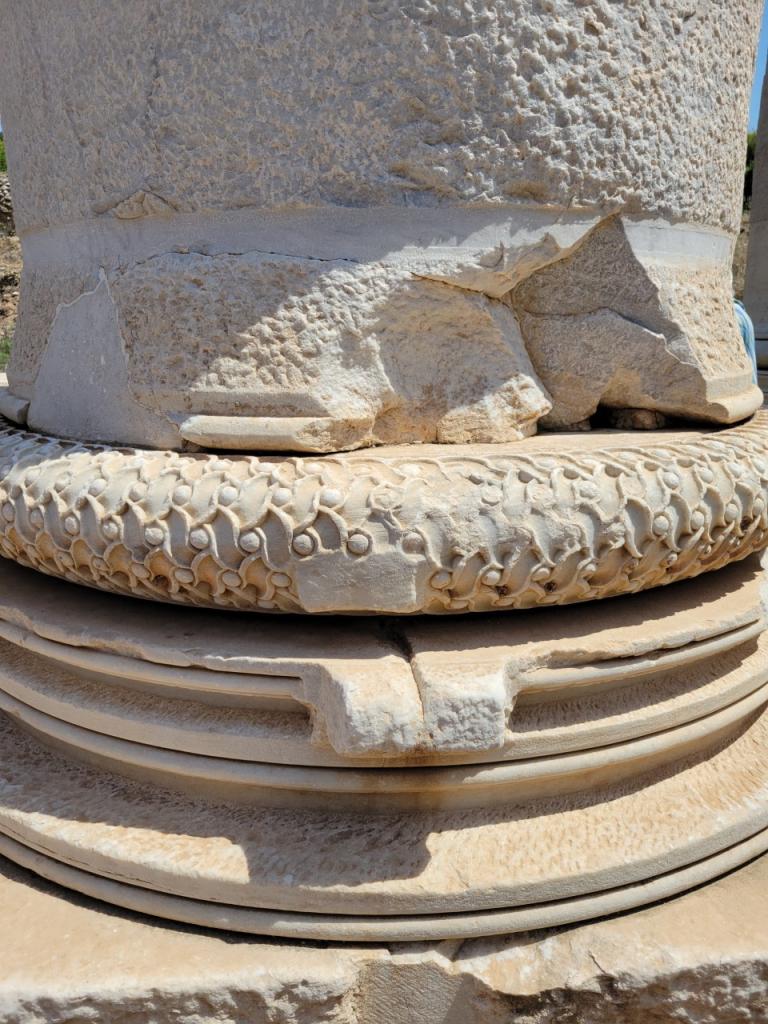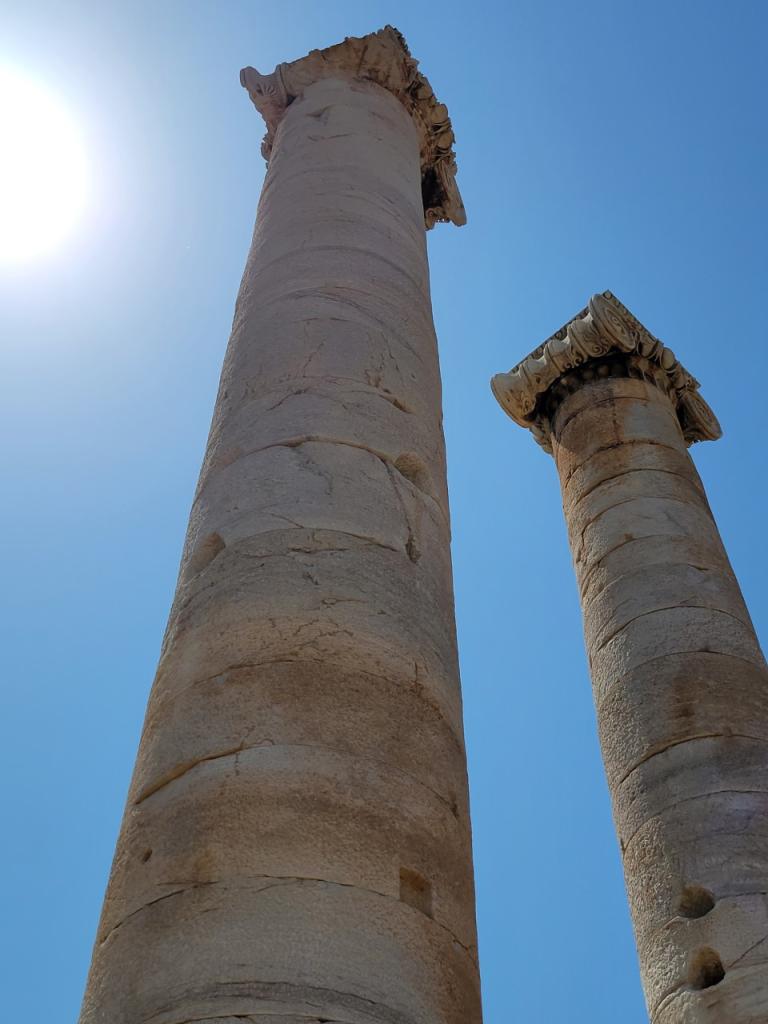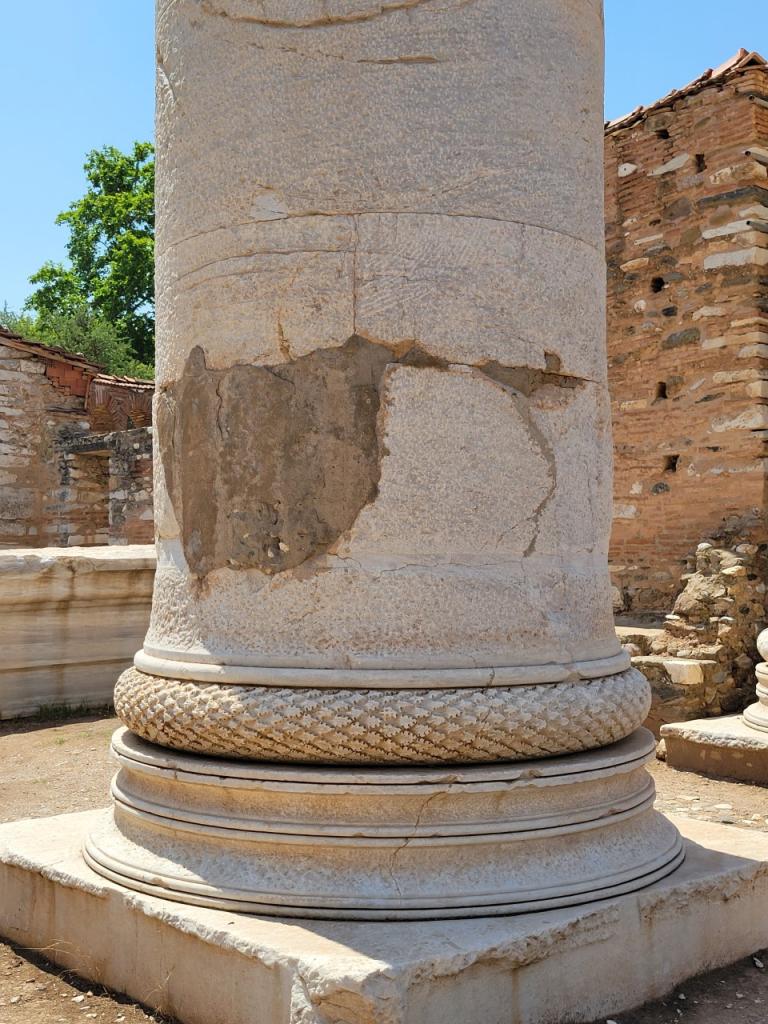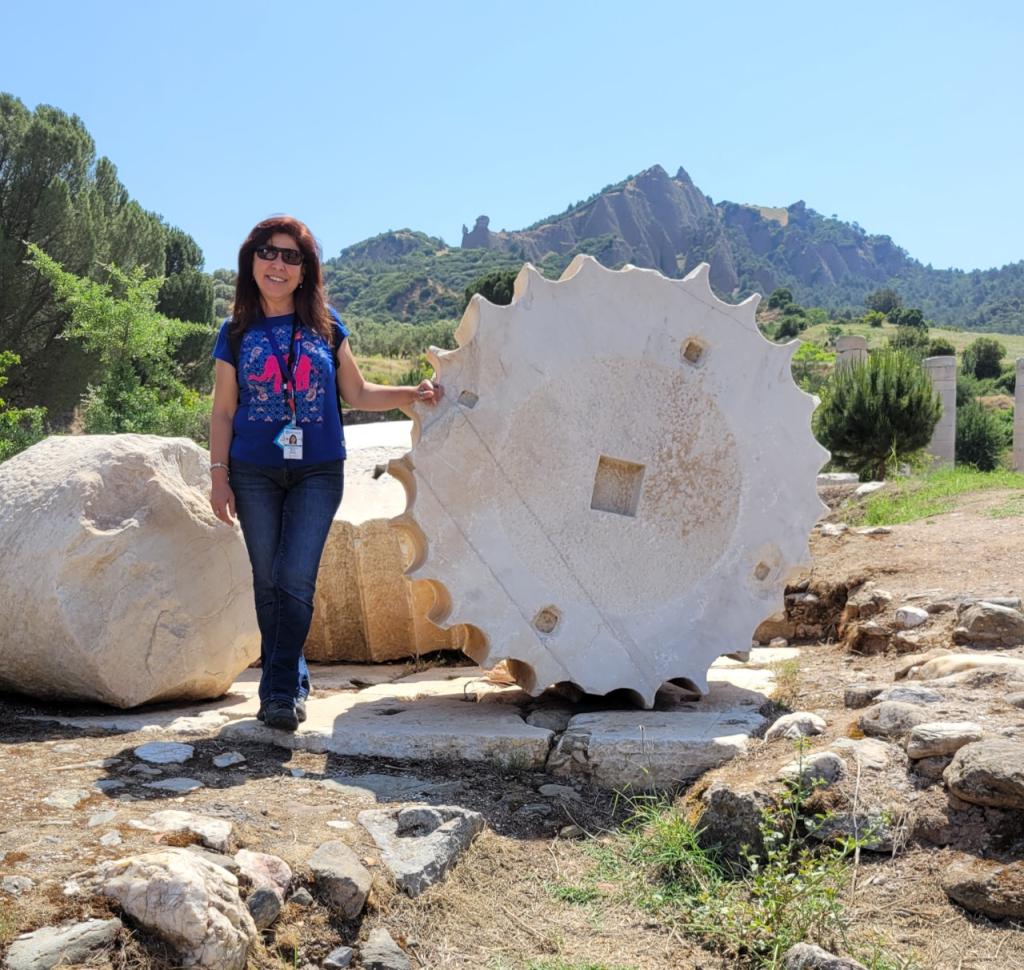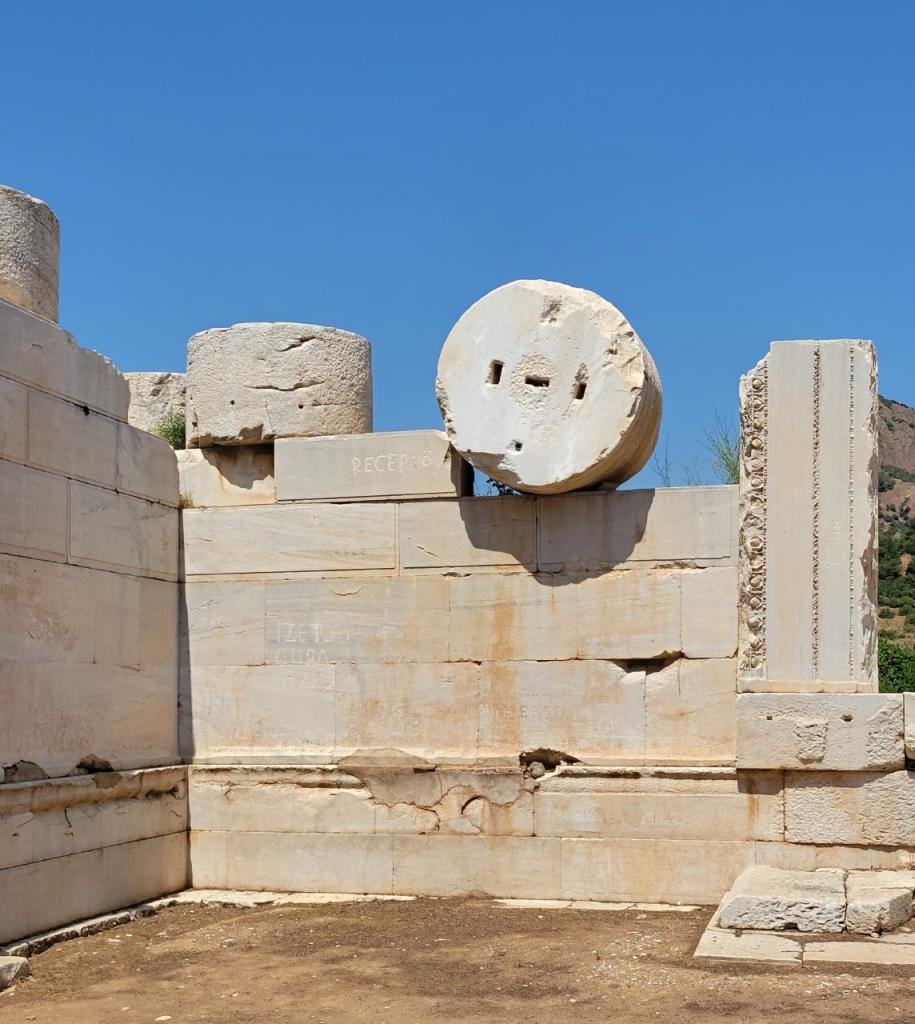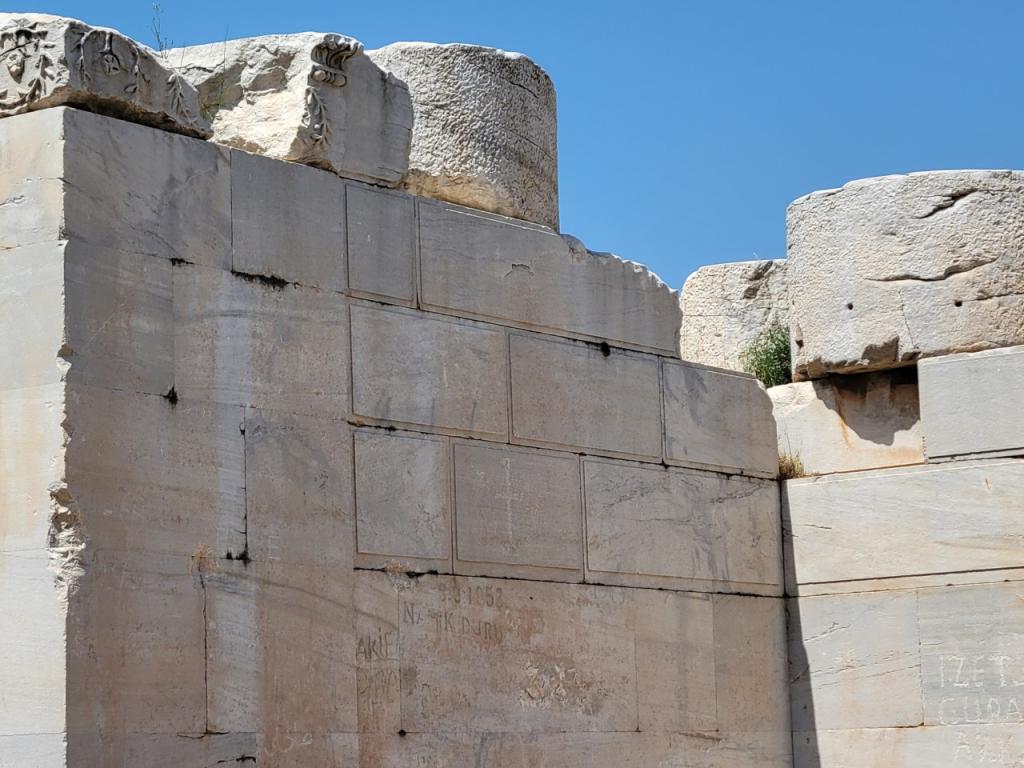Some of the seven churches of Revelation really provide us with little or nothing to see in the present (e.g. Thyatira and to lesser degree Philadelphia), but Sardis is a different story, and we will consider it in this post. Like so many of these cities, the reason we find it out in a field and not close to any real city is because of the earthquakes which destroyed or severely damaged so many of them that they were eventually abandoned. This of course makes the archaeological work much easier, unlike trying to do such work in the middle of downtown Konya or Tarsus. And until next year when the dig begins the same will be true of the Pauline city in the Lycus valley to which he wrote Colossians. For example the following is all there is to see at present at that tel…. All they’ve done so far with radiometer is locate where the outer city walls were and you can see a few stones of the odeon sticking out from the side of the tel. I climbed to the top of the site and took a few shots…
By contrast, with Sardis you not only have ruins to see, you have elaborate reconstruction as well as restoration of the gymnasium and synagogue. There is always a big debate as to how much to restore so you have a clear sense of the original, and how much to just reassemble what is still here but has fallen down or shifted.
Sardis was a major city sitting alongside a Roman road, which made things easy for commerce. And it was a prosperous city and the dangers of syncretism for both Jews and Christian converts was considerable. Here is the intro sign for the site…
Like what we saw at Pergamon, there was a lower and an upper city, and a separate cult site, in this case a considerable temple of Artemis as we shall see. The acropolis or upper city has not much been excavated but here is a shot of it in the distance. You can see some city walls protruding from the hill…
We will examine the temple of Artemis remains and the remains of one of the earliest churches in Turkey behind it first…
These remains may date to the 4th century A.D. making them one of the very earliest churches in all of the region. What we see now seems to mostly be a bit later Byzantine construction using brick….
This would have been the apse and next to it perhaps the sacristy where the chalice and wine and bread were kept…
There is evidence elsewhere at the site for a continued later Christian presence…
There is in addition Christian graffiti on some of the remains of the Artemis temple…
Now let’s focus on the Temple of Artemis, which was once a large impressive structure which huge columns capitals supporting it.
Here is the front entrance to the temple complex…
The sheer size of the capitals and column bases and their artistic decoration tells us that they spared no expensive in building this temple…
It is interesting that there are signs of the artisan signing his work, for instance we see the Greek word tekton at the base of this column and a name…
And signs that the temple was never completely finished….notice the protruding tabs which normally would have been chiseled off.
But how were these enormous columns erect? Answer they are a series of drums in the middle of which were holes for rods…in other words the columns were stacked up drum by drum like a child’s doughnut ring toy.
Otherwise, they used rectangular blocks with the casemate border..



